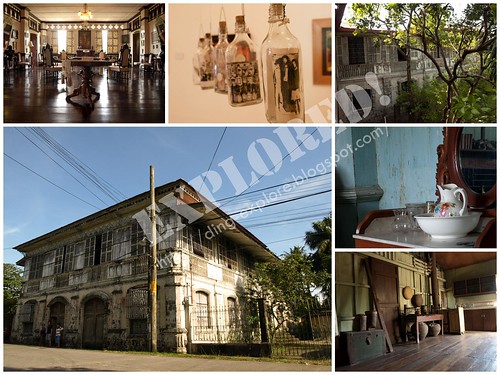One interesting fact about Negros Occidental is the lifestyle of the rich and famous of Sugarlandia. Perhaps, an obvious Filipino trait, we always want to pry on the lives of people, and this time, the rich Negros clans--how they lived, how they were highly regarded in their communities, and how they influenced or were influenced by men and women in power.
Indeed, going around the ancestral house makes one nostalgic about how rich, powerful, and influential the clan was. A glimpse of "Balay ni Tana Dicang" or the ancestral home of the Lizares and Alunan clan, exactly allows one to travel back in time--reflecting the lifestyle of the Lizares family, and the story of Negros back in the 19th century.
Balay ni Tana Dicang stands majestically in the heart of Talisay, Negros Occidental. Otherwise known as the Bahay na Bato it was built in ca. 1883 in a 6,000 square meter property. Owing to the diligence of the descendants of Don Efigenio Lizares and Doña Enrica Alunan, its original structure and authentic and antique furniture, ornaments and accessories, including the China porcelain and indigenous items in the kitchen are well-preserved to this day.
It has 18 rooms, most of which are bedrooms, the biggest being the formal living room and dining rooms. One or two of which were permanently assigned to their regular guests like the late Presidents Manuel L. Quezon and Sergio Osmeña, who had made the Lizares home the presidential abode in that part of Negros. One can almost imagine two late Philippine presidents actually sleeping and dining in the house, and perhaps how the policies in the sugar industry, at the time, were crafted.
Aside from the room of the two late presidents, the more interesting room in the house is that of Tana Dicang, which is equipped with a private bath, lavatory, working table, a prayer nook or altar, and a secret passage to the ground floor below. That secret passage, which I think serves as security measure back then (which I forgot to take photos of), was a simple square manhole underneath the bed that leads to a carriage, which they, perhaps, used in times of an emergency. Tana Dicang's room also has a peephole that gives a view of the goings on below--either by servants or other people.
It is also interesting to note that they had those Antipolo-type toilets where one needs to squat. In those times, perhaps, it was already a luxury to have one. This one, I decided not to take photos since it would be too privy to show it to the world. Besides, the toilet and bathroom were too dingy and dark and I felt like somebody was actually telling me not to take one. The caretakers informed us that the house is haunted. (Goosebumps!).
The kitchen is a large area, suggesting that back in the day, there were a number of servants who did a lot of cooking for and serving a large number of guests. Likewise the dining area is large enough to accommodate a number of important guests, where servants can freely move around without bumping into each other. Back in the day, the family already has its own deep well, and the water tank is at least 25 cubic meters, that a back azotea was built above it. Realizing though that the water tank is old, I never lingered in the back azotea.
The formal receiving area is the centerpiece of the house, where one can find an old piano, the bust sculpture of the old couple, and several chairs and tables. One set of chairs and sofa are arranged in the center of the room. This was reserved for the important guests, and those around it are, perhaps, reserved for not-so-important guests, or their personal assistants.
The house is one of the few houses that survived wars, revolutions and the ravages of time. This authentic and classic example of Filipino ancestral architecture is a Lifestyle Museum.
Again, thanks for exploring with me, and hope you enjoy the photos of the house through this slideshow. If you have a slow connection, or sometimes, Flickr is slow too, you may click this link to the photo set in Flickr.
________
Location: 36 Rizal Street, Talisay City, Negros Occidental
Museum hours: 10:00 am - 5:00pm
Guided Tours: 10:30 am - 3:00pm
Entrance Fee: P100.00
Do you like this article? Like us on Facebook, too!


3 comments :
Napicturan ko to sa labas, sa loob indi. Pwede pala pumasok? =o
yes, Christian. may fee lang na P100/head.
isasama ko to sa itinerary
Post a Comment